Mastering Data-Driven Progress in ABA Therapy
Understanding the Foundations of the Premack Principle in ABA
The Premack Principle is a cornerstone concept in Applied Behavior Analysis (ABA), serving as a practical strategy to motivate and reinforce desired behaviors. Originating from behavioral psychology, it leverages the natural preferences of individuals to foster compliance, learning, and positive change. This article explores what the Premack Principle is, how it functions within ABA, its various applications, and why it remains a vital tool in behavior modification.
The Origins and Theoretical Background of the Premack Principle
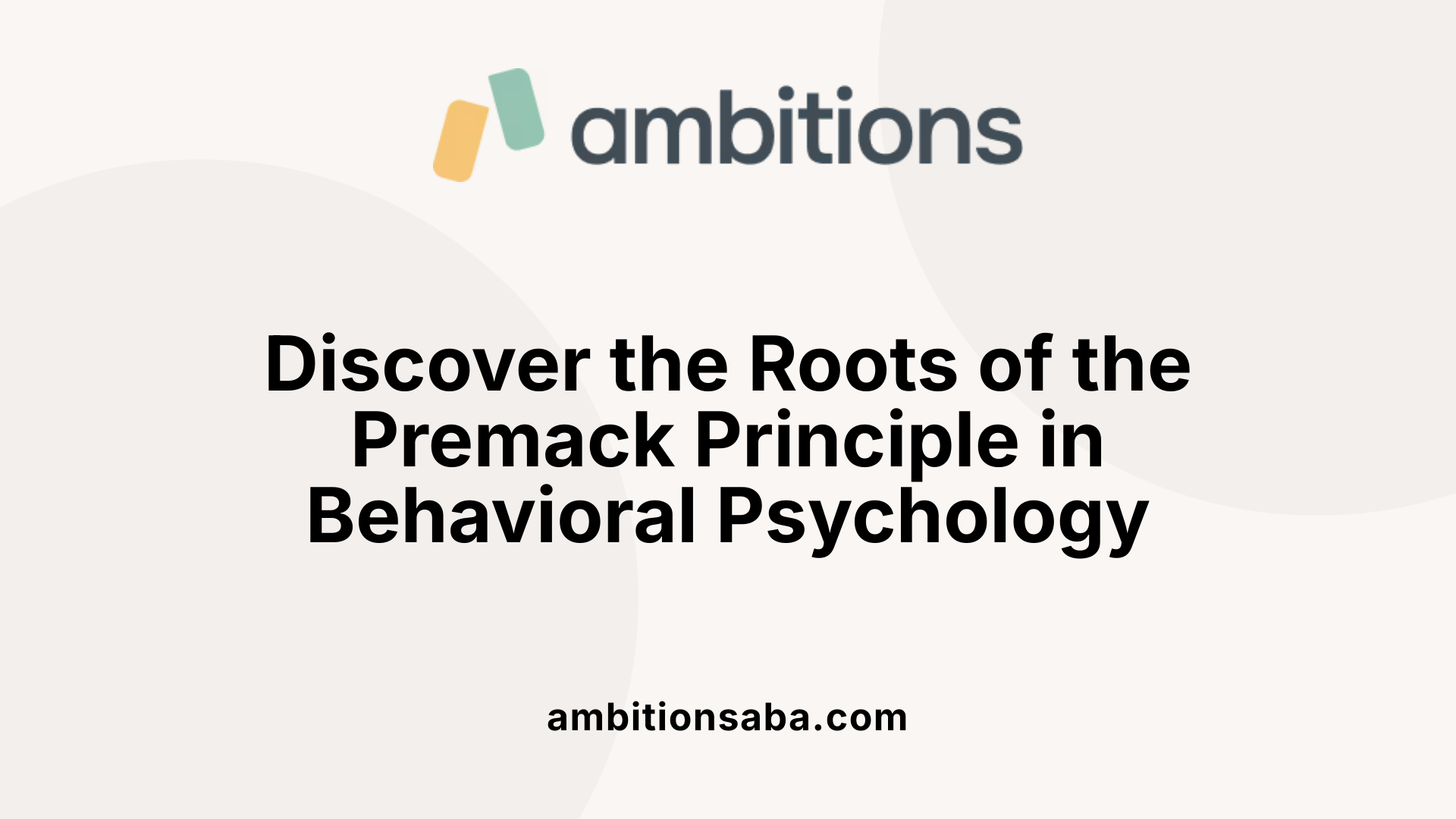
Development by David Premack in 1965
In 1965, psychologist David Premack introduced what is now known as the Premack Principle, based on his observational studies in behavioral psychology. Premack aimed to understand how more preferred activities could influence less preferred ones. His research demonstrated that nothing about a behavior's intrinsic value was necessary; instead, its likelihood or probability of occurring relative to other behaviors determined its reinforcing power.
Influence of B.F. Skinner and behavioral psychology
The Premack Principle was influenced heavily by the work of B.F. Skinner and the broader field of behavioral psychology. Skinner's theories on reinforcement and operant conditioning laid the groundwork for understanding how behaviors could be modified through consequences. Premack expanded on these concepts by emphasizing the relativity of reinforcement — that the value of a reinforcer depends on its likelihood compared to other behaviors. This
How the Premack Principle is Applied in ABA Therapy
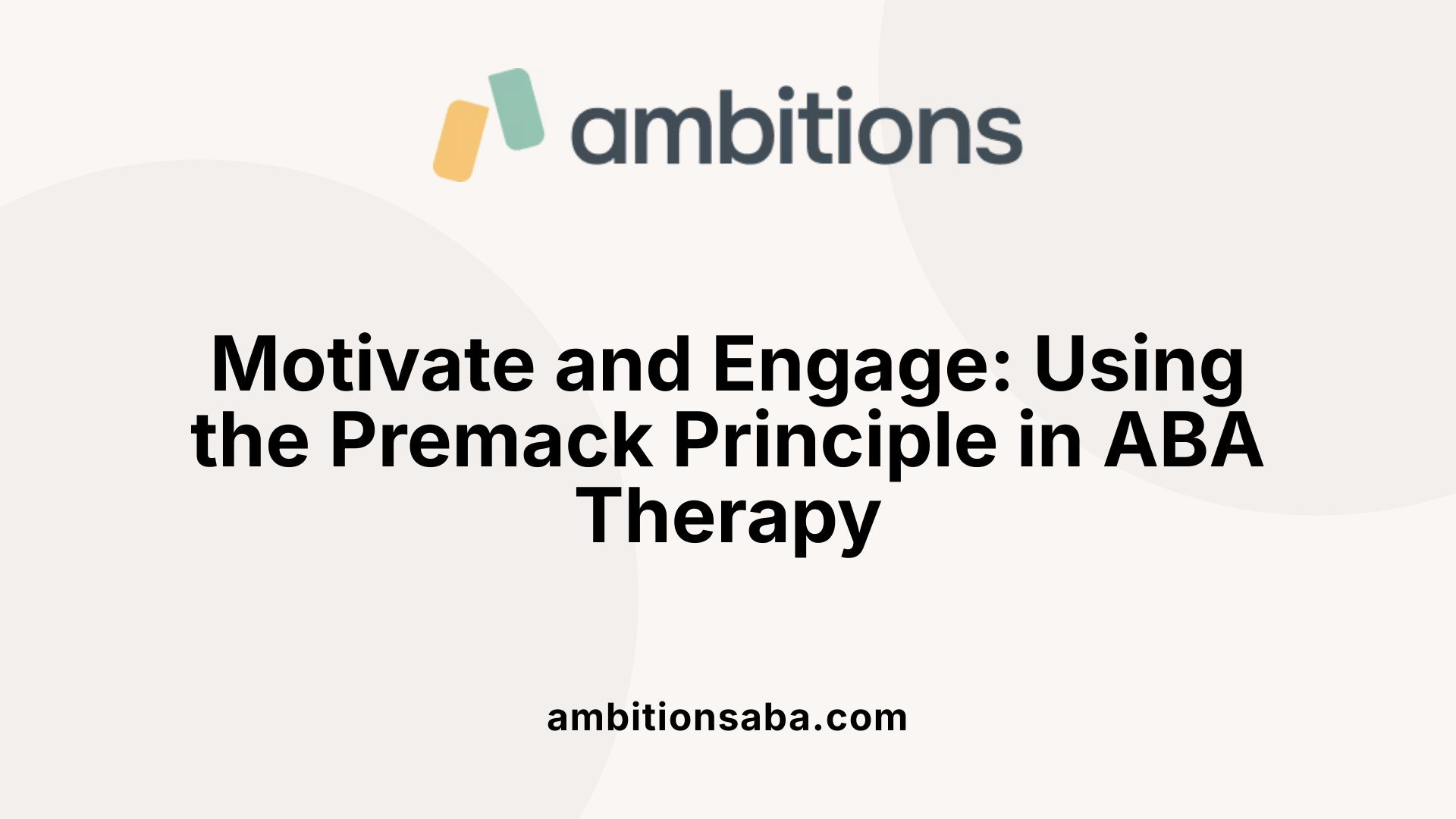 The Premack Principle plays a vital role in Applied Behavior Analysis (ABA) therapy, especially when working with children with autism or developmental disorders. It is used to motivate desired behaviors and increase engagement by linking them with activities that are naturally more preferred.
The Premack Principle plays a vital role in Applied Behavior Analysis (ABA) therapy, especially when working with children with autism or developmental disorders. It is used to motivate desired behaviors and increase engagement by linking them with activities that are naturally more preferred.
In therapeutic and educational environments, the principle helps reinforce low-interest tasks such as completing homework, chores, or social interactions. For example, a child might be required to finish their homework or put away toys before they are allowed to play with their favorite tablet or toys. This strategy encourages persistence on less preferred tasks by providing access to high-probability activities as a reward.
Visual supports are frequently employed to make the contingency clear. Tools like First/Then boards visually depict the sequence — for instance, 'First do your chores, then watch a video.' These supports help children understand what is expected and motivate them to complete necessary but less desirable behaviors.
The application extends beyond academic tasks. Therapists may pair communication or social skills training with preferred activities. For example, a child might be prompted to use words or gestures before engaging in a preferred game or activity.
To teach this principle, practitioners first identify the behaviors that are less preferred (low-probability) and those that are more preferred (high-probability). They establish clear, consistent contingencies expressed through verbal prompts or visual cues, ensuring the child understands the sequence.
Implementation involves withholding access to the preferred activity until the less preferred behavior occurs. Therapists and caregivers monitor progress, reinforce compliance, and may gradually fade prompts to foster independence.
Overall, using the Premack Principle in ABA therapy not only increases compliance with difficult tasks but also supports skill development and positive social behaviors across various settings.
Comparison of Reinforcement Strategies: Positive Reinforcement vs. The Premack Principle
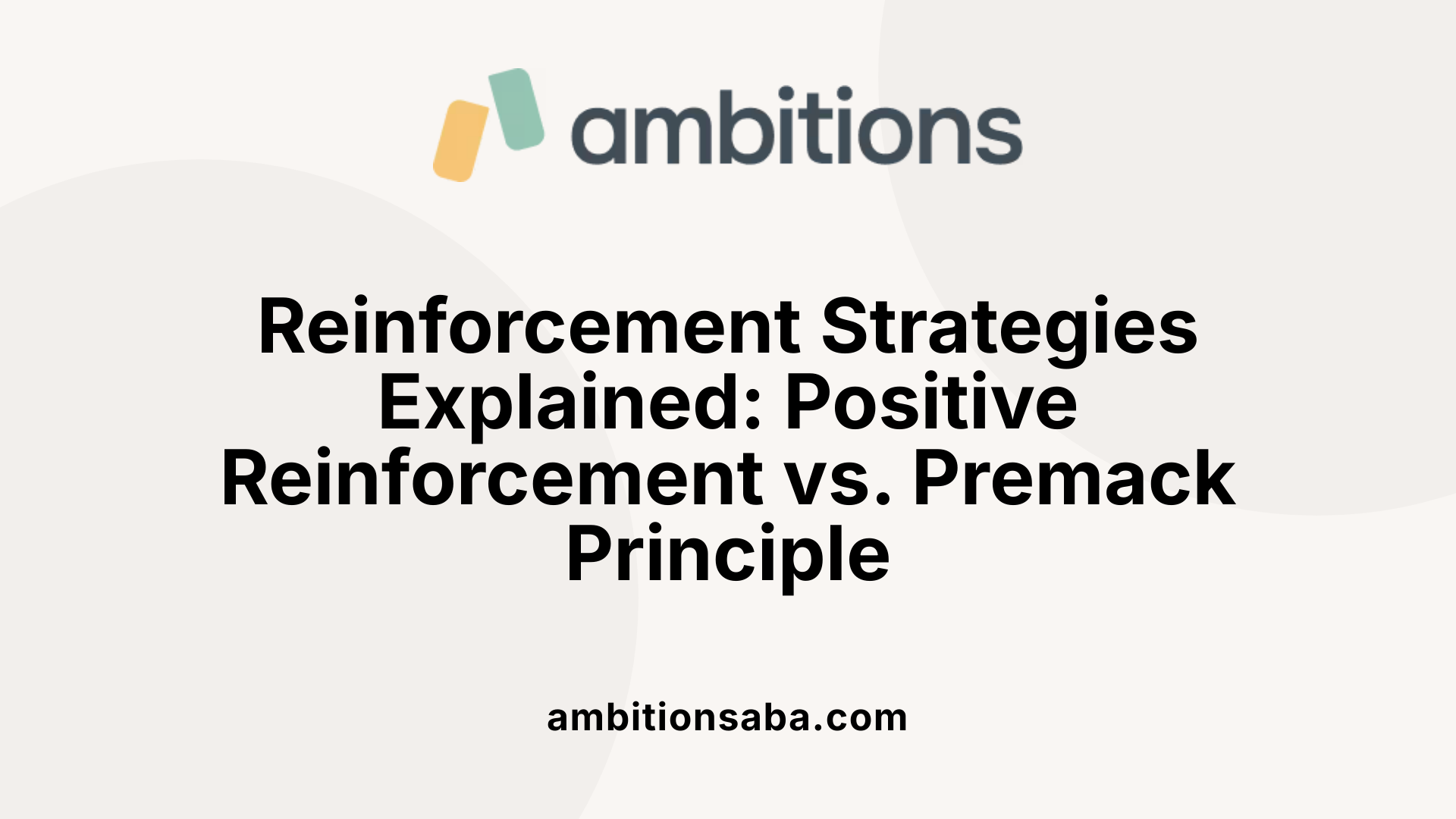
What is the difference between positive reinforcement and the Premack Principle?
Positive reinforcement is a broad behavioral strategy that involves offering a rewarding stimulus immediately after a desired behavior occurs. This increases the likelihood that the behavior will happen again. For example, giving a child praise or a treat after completing homework exemplifies positive reinforcement.
On the other hand, the Premack Principle is a specific rule within the realm of reinforcement. It states that activities with higher likelihood or probability (preferred behaviors) can serve as rewards for engaging in less probable, less preferred behaviors. For instance, a parent might tell a child, "You can play video games (high-probability activity) only after you finish your vegetables (low-probability activity)."
The key difference is that positive reinforcement can involve any rewarding stimulus and is used broadly to encourage various behaviors. In contrast, the Premack Principle specifically leverages hierarchical activity preferences, using more desired activities to reinforce less preferred ones based on their natural response probabilities.
While both concepts aim to increase desirable behaviors, the Premack Principle emphasizes the relative desirability of activities, relying on natural preferences and activity hierarchy, whereas positive reinforcement is more flexible and can involve external rewards not necessarily linked to activity preferences.
In essence, positive reinforcement is a general technique, while the Premack Principle is a strategy that uses the high frequency of certain behaviors to motivate engagement in less frequent activities. Both are valuable in behavioral therapy and education but serve slightly different purposes based on the context and individual preferences.
Significance and Benefits of the Premack Principle in ABA
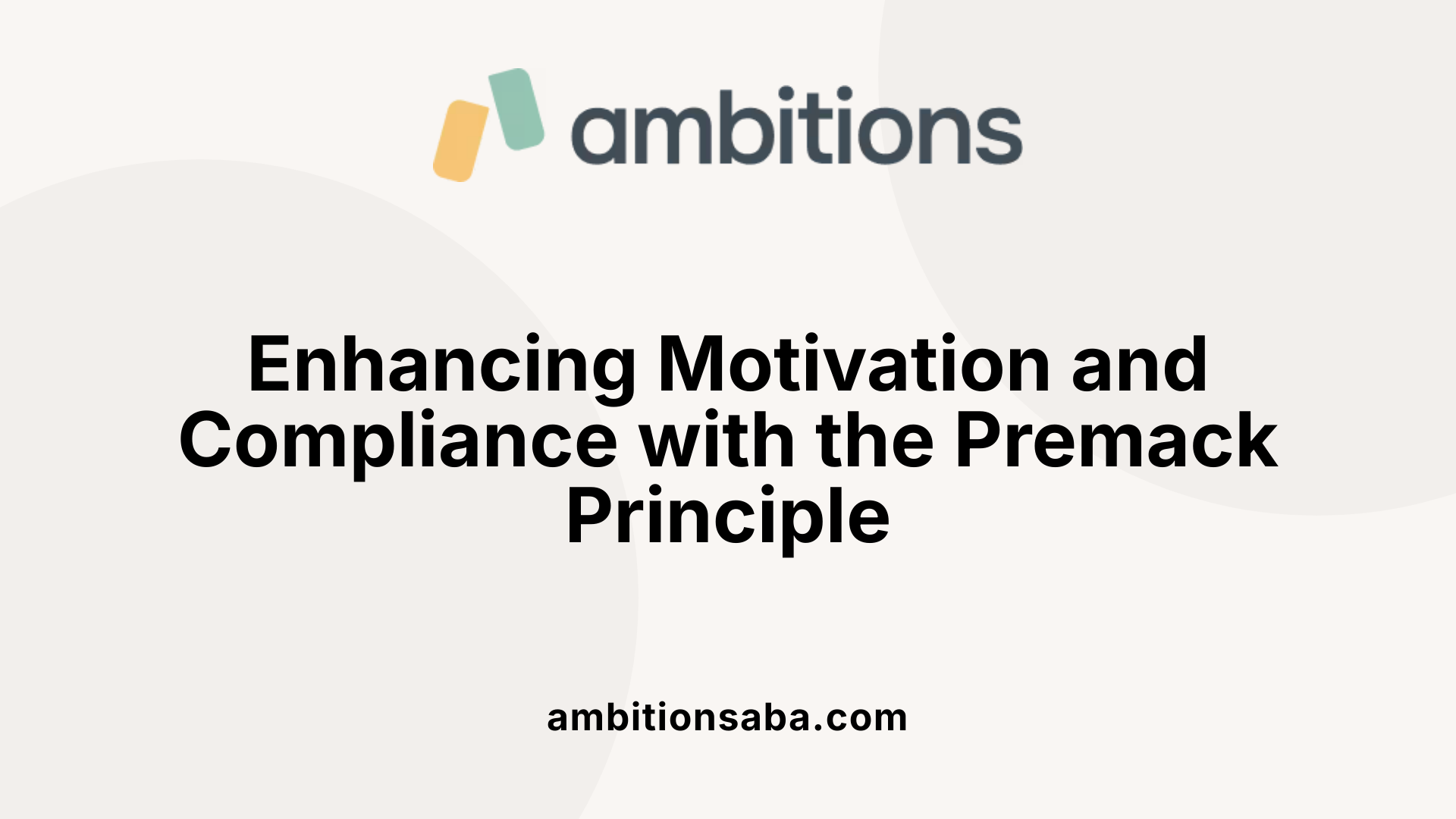
How does the Premack Principle enhance motivation, compliance, and learning?
The Premack Principle boosts motivation by making less preferred tasks more appealing through access to preferred activities afterward. When individuals, especially children with autism or developmental disorders, complete a less enjoyable activity, they gain the opportunity to engage in a favorite activity, such as playing with a toy or watching TV. This transition increases their willingness to participate in tasks that might otherwise be avoided.
In terms of compliance, the principle provides a clear, straightforward way to encourage cooperation. Using 'first, then' language helps set expectations, making it easier for learners to understand what is required and what they will receive in return. For example, a child might be told, "Finish your homework first, then you can play outside," which directly links the less preferred task with a preferred reward.
For learning, the Premack Principle creates an engaging environment that promotes task completion and skill acquisition. It motivates individuals to practice new behaviors or complete academic tasks by rewarding them with activities they find enjoyable. This approach not only increases participation but also helps build positive associations with challenging tasks.
Why is the Premack Principle versatile and easy to implement?
The principle's versatility lies in its broad applicability across various settings—homes, schools, and therapy environments—and with individuals of different ages or abilities. It can be used to manage chores, improve classroom behavior, or support therapy goals.
Implementation is straightforward: once the high- and low-probability behaviors are identified, caregivers or teachers establish clear contingencies. Visual aids, such as visual schedules or First/Then boards, facilitate understanding and help individuals anticipate what comes next. Consistency in applying these strategies ensures the effectiveness of the reinforcement.
Furthermore, tailoring the preferred activities to individual preferences makes the approach highly adaptable. Whether it's a favorite snack, game, or activity, it can be incorporated effortlessly into daily routines.
What is the impact of the Premack Principle on individuals with autism and developmental disorders?
Research in ABA shows that the Premack Principle significantly benefits individuals with autism and other developmental challenges by increasing motivation and encouraging positive behaviors. These individuals often experience difficulties with compliance and motivation, and using preferred activities as reinforcers helps overcome these issues.
In therapy, linking less preferred tasks with highly preferred activities facilitates skill development, reduces problem behaviors, and promotes independence. Visual supports improve understanding, especially for those with communication challenges, ensuring they recognize the connection between their actions and rewards.
Overall, the Premack Principle provides an ethical, effective, and evidence-based method for behavior change. Its focus on positive reinforcement fosters a supportive environment where individuals are empowered to learn and adapt.
| Aspect | Description | Example |
|---|---|---|
| Motivation Enhancement | Increases willingness through preferred activity access | Completing chores to watch favorite TV show |
| Compliance Improvement | Encourages following directions with clear contingencies | Finishing homework for game time |
| Learning and Skill Development | Promotes participation and habit formation | Doing therapy tasks to earn playtime |
| Adaptability and Ease | Easily tailored to individual preferences and settings | Using favorite snacks as reinforcers |
| Impact on Autism & Development | Supports behavior management and motivation | Reinforcing communication skills with preferred activities |
The Premack Principle as an Antecedent Strategy in Behavior Modification
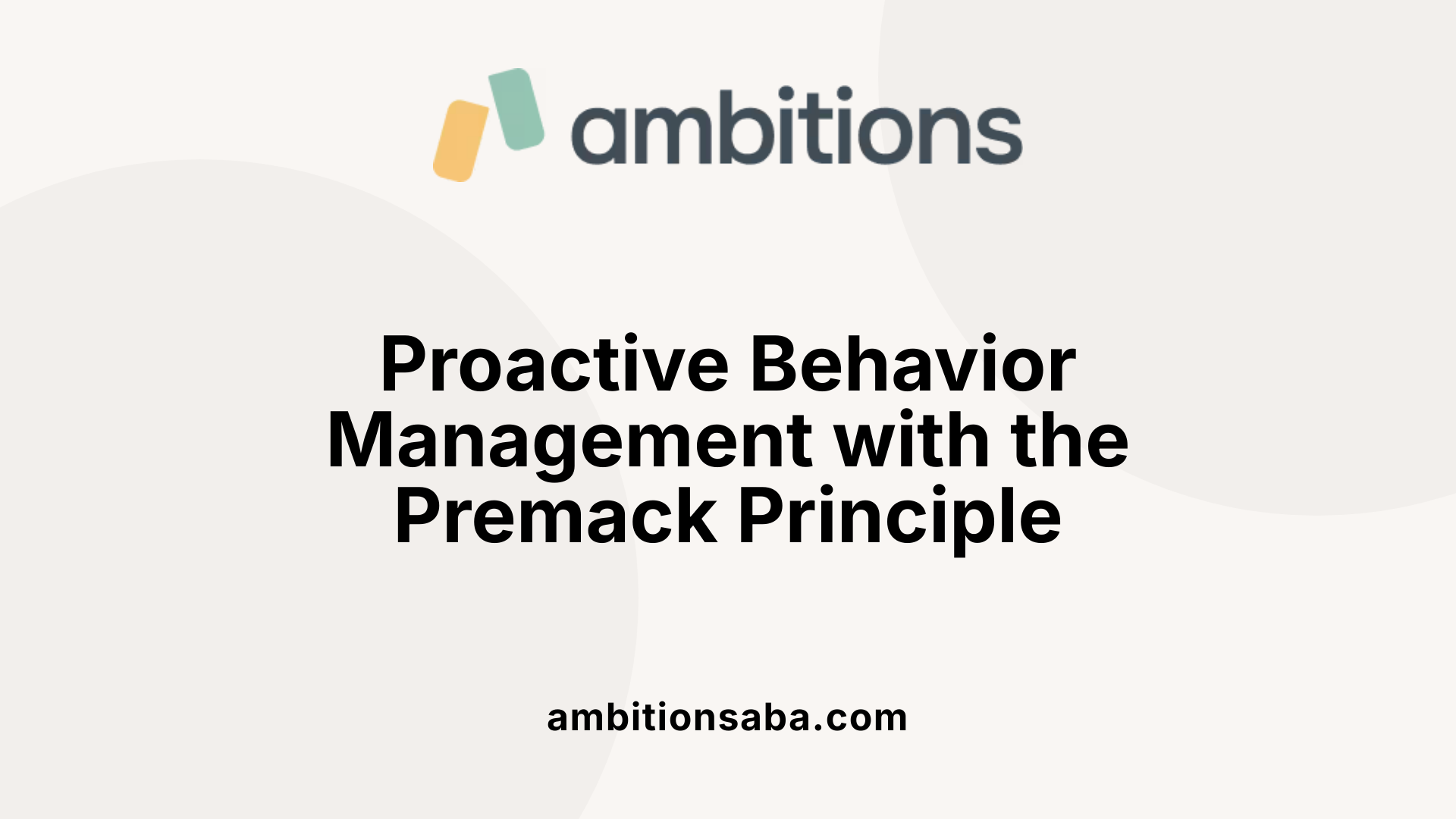
Is the Premack Principle an antecedent strategy?
Yes, the Premack Principle is considered an antecedent approach in behavior modification. This principle uses the opportunity to engage in a preferred activity as a motivator or reinforcement before or during the performance of a less preferred behavior.
In practice, it involves arranging the environment so that a less desired activity is contingent upon the completion of a more preferred activity. For example, a child might be told, "First do your homework, then you can play video games." This setup creates an antecedent cue—reminding or prompting the child to complete the less preferred task with the promise of access to a preferred activity afterward.
By establishing these contingencies, the Premack Principle proactively encourages desired behaviors and can reduce resistance or problematic behaviors. It effectively sets the stage for compliance and motivation by leveraging naturally preferred activities as motivators.
In various settings, such as classrooms or therapy sessions, this principle helps shape behaviors without the need for overt punishment. Instead, it initiates behavior through positive, anticipatory prompts that reinforce engagement in less preferred tasks.
Using the Premack Principle as an antecedent strategy promotes a proactive approach—organizing routines and demands in ways that naturally motivate individuals to perform necessary, but less enjoyable, behaviors.
For further insights, a search with the phrase "Premack Principle as an antecedent strategy in ABA" can provide additional examples and research supporting its role in behavior management.
Harnessing the Power of the Premack Principle for Behavior Change
The Premack Principle remains a fundamental element in ABA, offering a simple yet powerful approach to motivate learners and reinforce desired behaviors through the strategic use of natural preferences. By understanding and effectively applying this principle, practitioners, educators, and caregivers can create engaging, outcome-driven environments that foster positive development. Its versatility, backed by research and practical success stories, underscores its enduring value in behavior management and skill acquisition across diverse settings.
References
- Premack principle in ABA therapy: 5 ways to implement
- Premack Principle: A Guide to Using the First/Then Rule - Master ABA
- Applications of the Premack Principle: A Review of the Literature
- Premack Principle ABA Examples and Implementation
- Understanding the Premack Principle in ABA Therapy | Childwise
- The Premack Principle in ABA Therapy: Explained - Elemy
- Teaching with First/Then (Premack Principle) - How to ABA
- What Is the Premack Principle? - Astra ABA
- Premack principle in ABA therapy: 5 ways to implement

